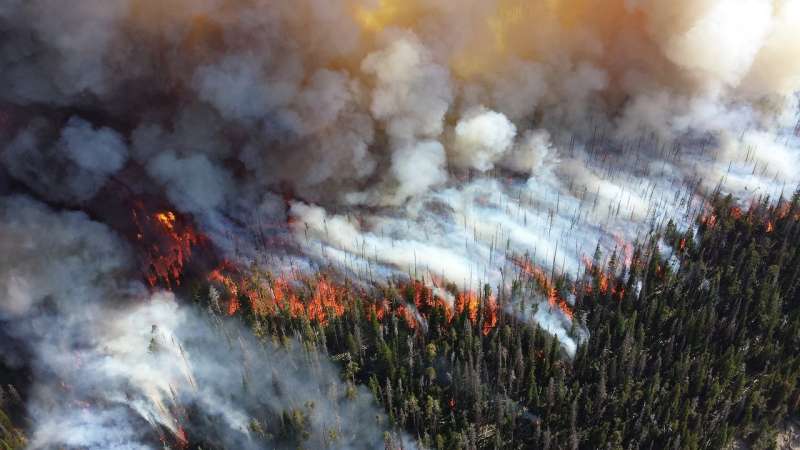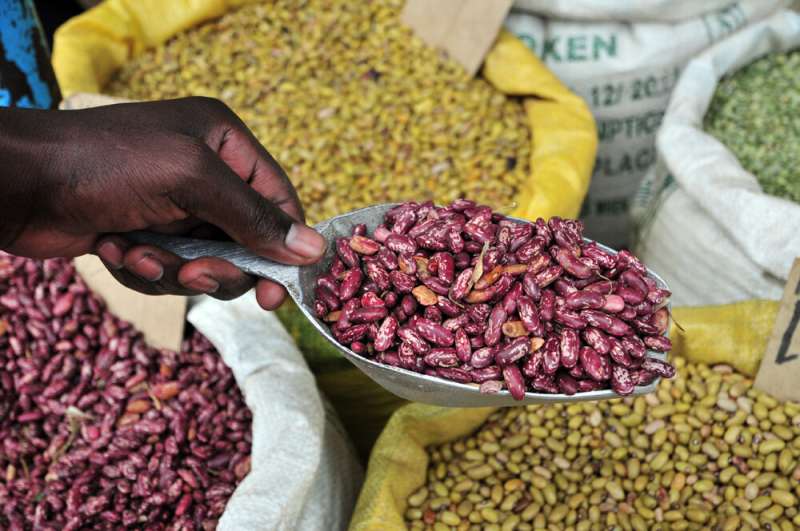IT'S NATIONAL COMING OUT DAY
NEW SUPERMAN
CLARK KENT'S SON, JON, COMES OUT AS BI... DC Comics Confirmed!!!
10/11/2021
The Man of Steel is coming out of the phone booth like no other iteration before -- Superman's son will be bisexual going forward ... ushering in a new era under DC.
The announcement came down Monday by the comic book giant ... namely, that Jon Kent -- Clark Kent and Lois Lane's son, who's the new Superman -- is indeed both into guys and girls. Not just that ... but a male relationship will be explored within a forthcoming issue.
This new series, titled "Superman: Son of Kal-El," got underway back in July ... and it follows young Jon as he navigates taking on the red cape and the responsibilities as Earth's superest of heroes -- while his pops steps back. Starting in November, DC says Jon will officially come out ... with promotional photos of him kissing his pal, Jay, surfacing to tease the release.
The adventures of Jon are way more relevant and timely than anything Kal-El ever dealt with -- thus far, he's battled climate change crises, stopped a school shooting and even addressed immigration head-on ... not with fists, but with protest!
As for this new move to make him bi ... the series' lead writer, Tom Taylor, says they didn't want to pass up the opportunity to make Superman as modern (and inclusive) as possible -- saying the idea of making a new Superman another straight white savior seemed lame.
Of course, this comes on the heels of DC announcing that their latest version of Robin/Tim Drake would also be bisexual ... which was hinted at and way less explicit as this is.
Here, Superman is straight up making out with a guy -- so DC's going all-in on LGBT representation.
On National Coming Out Day,
President Biden vows to combat
anti-LGBTQ+ discrimination

President Joe Biden vowed to combat anti-LGBTQ+ discrimination on National Coming Out Day on Monday. (AP Photo/Susan Walsh)AP
In honor of National Coming Out Day, President Joe Biden on Monday vowed to fight for the “full measure of equality, dignity, and respect” that the LGBTQ+ community deserves.
“Today and every day, I want every member of the LGBTQ+ community to know that you are loved and accepted just the way you are — regardless of whether or not you’ve come out,” Biden said in a statement.
Since taking office, Biden said his administration has worked to prevent and combat discrimination, including among transgender Americans.
But Biden, without invoking specific lawmakers, lamented that anti-LGBTQ+ bills are still circulating in state legislatures. In his statement, the president pushed for passage of the Equality Act, which would prohibit discrimination based on sex, sexual orientation and gender identity.
“Bullying and harassment — particularly of young transgender Americans and LGBTQ+ people of color — still abounds, diminishing our national character,” Biden said. “We must continue to stand together against these acts of hate, and stand up to protect the rights, opportunities, physical safety, and mental health of LGBTQ+ people everywhere.”
Massachusetts has the second largest LGBT population in the country, trailing only Vermont, according to a 2018 report from Boston Indicators and The Fenway Institute. Boston is home to the biggest LGBT community, though there are “significant numbers” in Hampshire and Franklin counties, as well.
Similar to trends across the United States, LGBT people in Massachusetts face a heightened risk of depression. A large share of LGBTQ youth of color also face economic, housing and food insecurity, according to the 2018 report.
Discrimination is pervasive in public places, including stores, restaurants, parks and health centers, the report states.
Biden acknowledged on Monday that the United States still has “more work to do to ensure every American can live free of fear, harassment, and discrimination because of who they are or whom they love.”
Biden praised the courage of LGBTQ+ Americans who live their lives with pride and showcase their “authentic” selves. And the president had a special message for people who are contemplating coming out: “Know that you are loved for who you are, you are admired for your courage, and you will have a community — and a nation — to welcome you.”
“My Administration will always have your back,” Biden said.
New Superman Comes Out As Bisexual In Upcoming Issue
TOPLINE
Jon Kent, the current Superman and the son of Clark Kent and Lois Lane, will come out as bisexual and involved in a romantic relationship with his journalist friend, Jay Nakamura, in the upcoming issue “Superman: Son of Kal-El,” according to DC Comics.
KEY FACTS
Issue No.5 will feature Jay looking after Jon, who “mentally and physically burns out from trying to save everyone,” which helps the two form a romantic relationship, DC Comics said in a statement.The news about the Man of Steel’s new romantic relationship comes on National Coming Out Day.
“SUPERMAN: SON OF KAL-EL #5” will be available at comic book shops starting on November 9th, according to DC Comics
CRUCIAL QUOTE
“Superman's symbol has always stood for hope, for truth and for justice,” writer Tom Taylor said in a statement. “Today, more people can see themselves in the most powerful superhero in comics."
KEY BACKGROUND
“Just like his father before him, Jon Kent has fallen for a reporter,” DCSuperman said in a tweet that came with a snapshot of Jon facing Jay, who has pink hair and wears black-framed glasses. In August, superhero Robin also joined DC Comics’ list of LGBTQ+ characters that include Batwoman and Midnighter, according to NBC News.
FURTHER READING
Superman Comes Out, as DC Comics Ushers In a New Man of Steel (New York Times)
DC Comics announces that Superman's son is bisexual
Issued on: 11/10/2021 
Text by:NEWS WIRES
Superman fell for a reporter and now his son is doing the same, although this time the superhero's love interest is a man called Jay. DC Comics announced on Monday that the new Superman, who is the son of Clark Kent and Lois Lane, will have a romantic relationship with a male friend.
Jon Kent and budding journalist Jay Nakamura struck up a friendship in a story released in August. They will share a kiss in a story to be published next month.
"Following a scene where Superman mentally and physically burns out from trying to save everyone that he can, Jay is there to care for the Man of Steel," DC comics said in a statement.
The storyline line will feature in "Son of Kal-El" issue five, due to hit shelves on November 9.
DC Comics described the new Superman as "bisexual" in its press release, which is headlined "Jon Kent finds his identity."
"Today, more people can see themselves in the most powerful superhero in comics," said Tom Taylor, who writes the series.
In the "Son of Kal-El" series Jon Kent has been fighting a number of social justice issues, including tackling widlfires and protesting the deportation of refugees.
The coming out of America's most famous superhero comes as more comic books embrace diversity.
"Aquaman" introduced a Black, gay superhero earlier this summer, while the latest Robin in the Batman comics came out as bisexual in August.
(AFP)
DC Comics Confirms New Superman Attracted To Dudes
DC Comics confirms that their new Superman, Jonathan Kent, the son of Clark Kent, is attracted to men.
Bounding Into Comics
Published on Oct 11, 2021
by John F. Trent
DC Comics confirms that their new Superman, Jonathan Kent, the son of Clark Kent, is attracted to men

Related: Rumor: DC Comics Will Make Superman Gay
The confirmation came after former DC Comics artist Ethan Van Sciver scooped that DC Comics would make Superman gay in their current Superman: Son of Kal-El series.
In his video back in August, Van Sciver stated, “So anyway, Clark Kent is going bye bye and they are going to replace him with Jonathan Kent and then they are going to announce that Jonathan Kent is gay. So Superman is effectively gay.”
Jonathan Kent did indeed replace Clark Kent as Superman in Superman #32 after Jon and Superman defeated the Shadowbreed.
At the end of that story, Superman tells Jon, “But the next time you wonder if you measure up or if you ever think of yourself as just ‘the Son of Superman’ know that you’re the Superman against whom all heroes will be measured someday. The Superman that I aspire to be.”

Related: New Superman Jon Kent Does Away With “The American Way” In The Hero’s Decades-Old Catchphrase In Tom Taylor’s Superman: Son of Kal-El #1
In Superman: Son of Kal-El #5, which is due out in November, DC Comics confirmed Superman will be attracted to men by sharing preview images for the upcoming issue. One of them shows Kent kissing a reporter named Jay Nakamura

In a blog post, DC Comics explains, “Just like his father before him, Jon Kent has fallen for a reporter. After initially striking up a friendship with reporter Jay Nakamura, he and Jon become romantically involved in the pages of SUPERMAN: SON OF KAL-EL #5 from writer Tom Taylor (DARK KNIGHTS OF STEEL) and artist John Timms (HARLEY QUINN).”
They add, “Following a scene where Superman mentally and physically burns out from trying to save everyone that he can, Jay is there to care for the Man of Steel.”

Not only did they share an image of Kent kissing Nakamura, but they also revealed a cover by Travis Moore and Tamra Bonvillain with Kent leaning in to kiss Nakamura marked up with a DC Pride logo.
Another cover by Inhyuk Lee shows Nakamura and Kent sitting side by side. It also features the DC Pride logo.

The book’s author Tom Taylor stated, “I’ve always said everyone needs heroes and everyone deserves to see themselves in their heroes and I’m very grateful DC and Warner Bros. share this idea.”
He added, “Superman’s symbol has always stood for hope, for truth and for justice. Today, that symbol represents something more. Today, more people can see themselves in the most powerful superhero in comics.”
Taylor added on Twitter, “Our Superman comes out. Happy Coming Out Day.”

He went on to tell IGN, “Over the years in this industry, it probably won’t surprise you to hear I’ve had queer characters and storylines rejected. I felt like I was letting down people I loved every time this happened.”
“But we are in a very different and much more welcome place today than we were ten, or even five years ago. When I was asked if I wanted to write a new Superman with a new #1 for the DC Universe, I knew replacing Clark with another straight white savior could be a real opportunity missed. I’ve always said everyone needs heroes and everyone deserves to see themselves in their heroes. Today, Superman, the strongest superhero on the planet, is coming out,” he added.

Not only did Taylor reveal that Jon is attracted to men, but that his new partner Jay Nakamura will actually receive powers that makes him invulnerable.
He explained to IGN, “Due to Jon’s shifting age and spending time in the future, Jon doesn’t really have any friends in the present day who are his own age. He doesn’t have his own cast. He has a best friend in Damian, who will remain integral in our series, but it was important to me that we gave Jon another close confidant and someone who can support him.”
“What was most important was making Jay Nakamura formidable in his own right. Finding the balance in their relationship so they could be equals rather than having Jay be too reliant on Jon. This is why Jay’s own powers are revealed in issue #4, and we learn he can’t be harmed,” he said.
Taylor elaborated, “That means, of everyone in Jon’s life, Jay is the only person Jon doesn’t need to protect. It means their relationship is an equal one built on mutual support.”

Artist John Timms also added in the DC Comics blog post, “I’m incredibly honored to be working beside Tom on the SUPERMAN: SON OF KAL-EL series showing Jon Kent tackling his complex modern life, while also saving the world from its greatest threats, villains and menaces.”
Speaking to IGN Timms said, “It is a pretty big deal doing it with Jon Kent as Superman. As we have seen Jon grow up in front of our eyes, it will be interesting to see him not only trying to find himself as a person but a global super hero in the complex atmosphere of modern life.”
He added, “On the other hand, I hope this kind of thing will not be seen as a big deal in the future. You could visualize how it could pan in the future when the most powerful man in the world is part of the LGBT community. So many things are on the horizon and beyond.”

Related: DC Comics Pokes Fun At Anti-Vaxxers With “Anti-Saver” Movement In Superman Vs Lobo #1
DC Comics Chief Creative Officer and Publisher Jim Lee also noted, “We couldn’t be prouder to tell this important story from Tom Taylor and John Timms.”
“We talk a lot about the power of the DC Multiverse in our storytelling and this is another incredible example. We can have Jon Kent exploring his identity in the comics as well as Jon Kent learning the secrets of his family on TV on Superman & Lois. They coexist in their own worlds and times, and our fans get to enjoy both simultaneously,” he said.

Related: DC Comics Retcons Tim Drake, Shows Him Attracted To Men
This announcement that Jonathan Kent is attracted to men comes just a little over two months after DC Comics retconned Tim Drake and showed him sexually attracted to males in the pages of Batman: Urban Legends.







